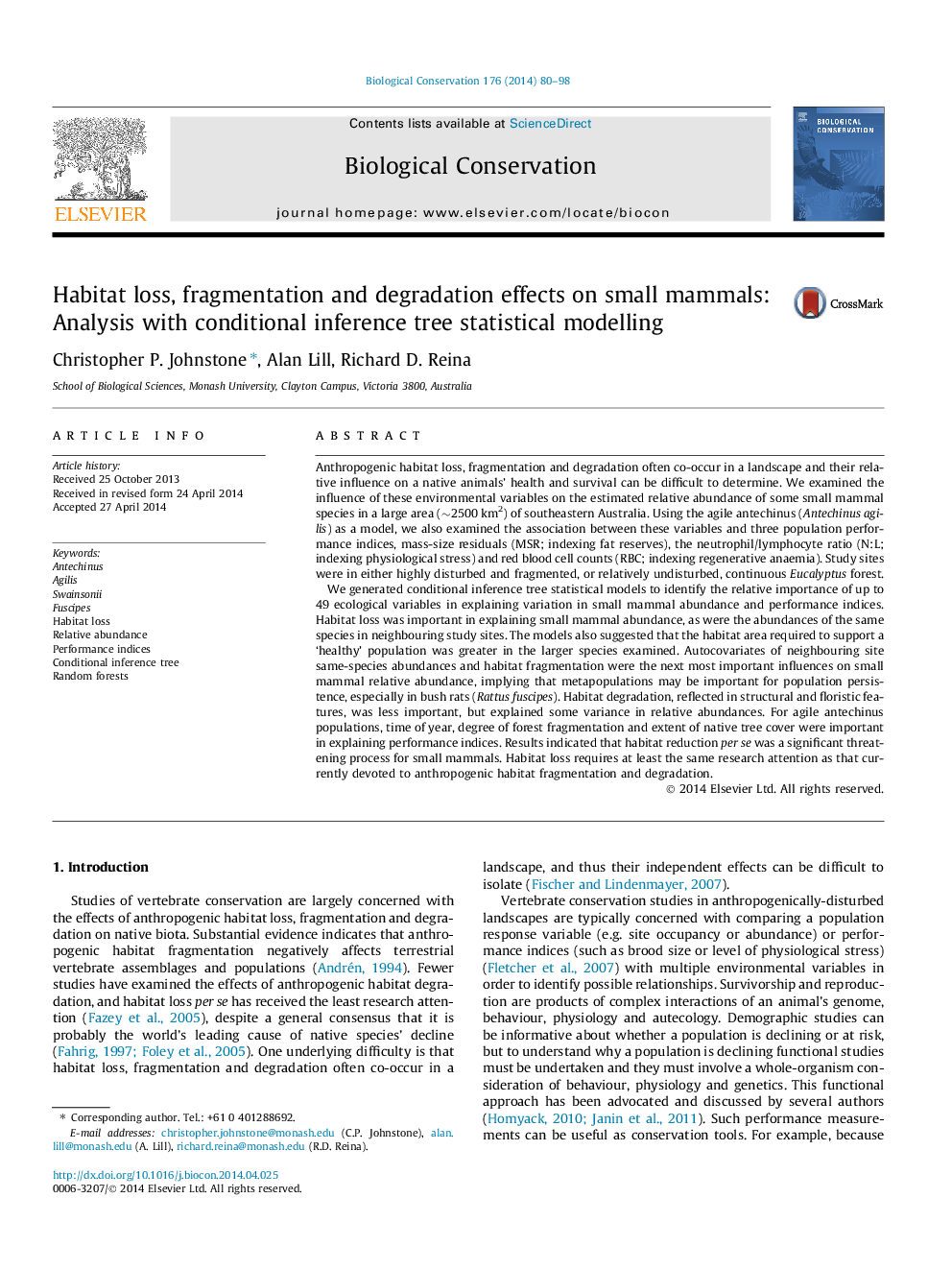| Article ID | Journal | Published Year | Pages | File Type |
|---|---|---|---|---|
| 6299462 | Biological Conservation | 2014 | 19 Pages |
Abstract
We generated conditional inference tree statistical models to identify the relative importance of up to 49 ecological variables in explaining variation in small mammal abundance and performance indices. Habitat loss was important in explaining small mammal abundance, as were the abundances of the same species in neighbouring study sites. The models also suggested that the habitat area required to support a 'healthy' population was greater in the larger species examined. Autocovariates of neighbouring site same-species abundances and habitat fragmentation were the next most important influences on small mammal relative abundance, implying that metapopulations may be important for population persistence, especially in bush rats (Rattus fuscipes). Habitat degradation, reflected in structural and floristic features, was less important, but explained some variance in relative abundances. For agile antechinus populations, time of year, degree of forest fragmentation and extent of native tree cover were important in explaining performance indices. Results indicated that habitat reduction per se was a significant threatening process for small mammals. Habitat loss requires at least the same research attention as that currently devoted to anthropogenic habitat fragmentation and degradation.
Related Topics
Life Sciences
Agricultural and Biological Sciences
Ecology, Evolution, Behavior and Systematics
Authors
Christopher P. Johnstone, Alan Lill, Richard D. Reina,
